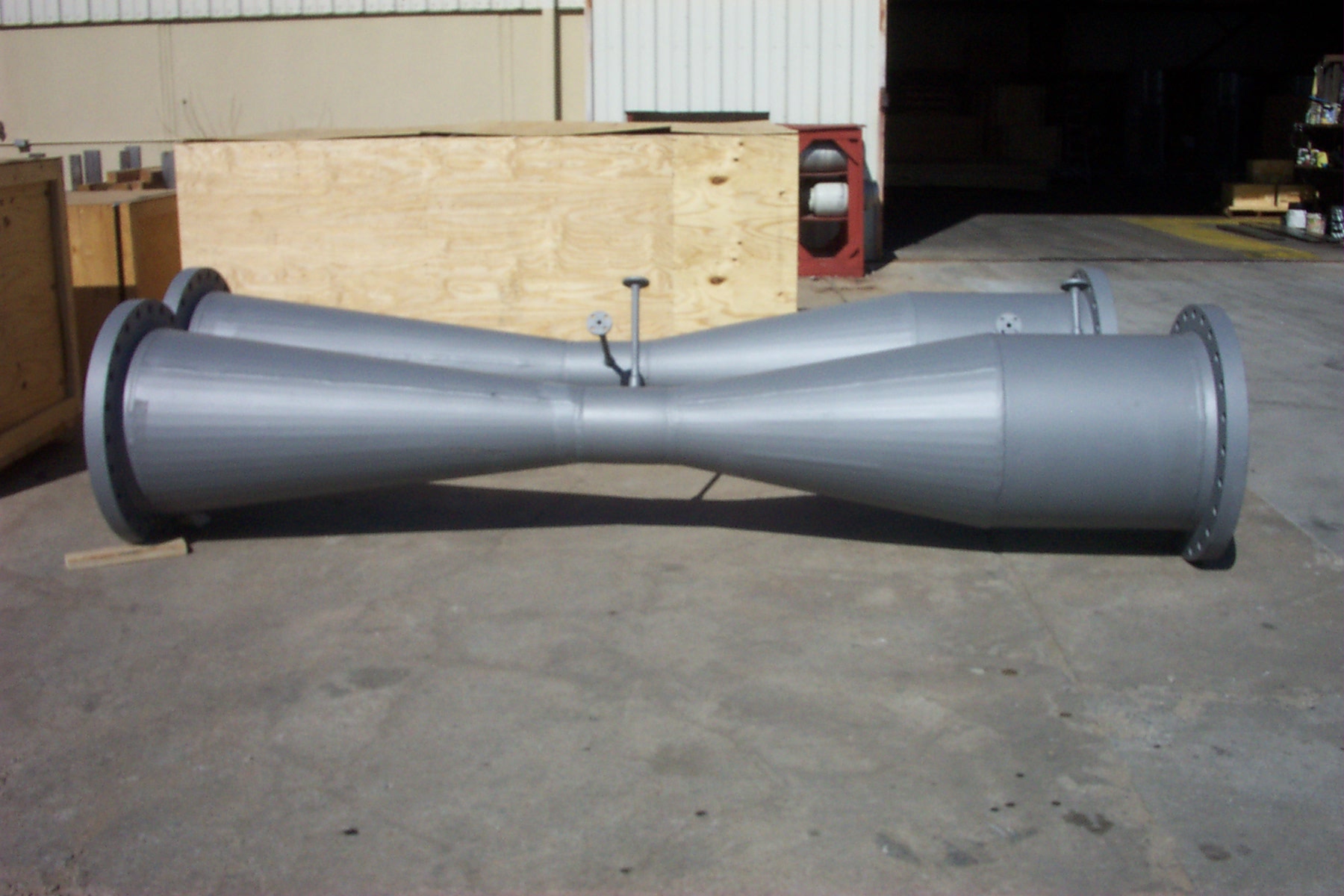I did a SW simulation (FEA) training course last week, and was able to play with Flow Simulation during breaks. So I modelled a venturi tube, inlet and outlet diameter of 5m, throat diameter of 1m and a free air speed of 5m/s.
I don't know how good the flow sim is, but the results still, IMO, show what Greg and Grubt have been saying about the operation of a vnturi tube wind generator.
For some reason I cannot use the on-line venturi calculator. But I will give an estimate.
Ignoring other effects the flow velocity will increase in proportion to the square of the diameter change - ie V2/V1 = (D1/D2)^2
Thus, for an initial velocity of 5m/s and a change in diameter from 5m to 1m the flow velocity in the throat is 125m/s.
So, to compare Power.
In the free stream the power is P = 0.5 * rho * pi*D^2/4*V^3*eff = 0.5*1.2*pi*25/4*125*0.4 = 0.59kW
In the throat of the venturi the power is P = 0.5*1.2*pi*1/4*1953125*0.4 = 368kW.
But if we look at the flow simulation results:

We can see that the air velocity is much reduced before the air enters the tube, the stagnation zone, and the maximum flow velocity at the throat is 10.678m/s - someway below the theoretical predicted. The air flow in teh entrance part of the pipe has dropped from the free stream velocity of 5m/s to around 15-2.5m/s.
Plugging that back into the equation P = 0.5*1.2*pi*1/4*10.768^2*0.4 = 0.23kW
The power available at the throat is much reduced (to about 30%) due to aerodynamic considerations.
This diagram is of flow trajectories, and it shows that on the exit side of the venturi there is some turbulance.

This diagram also shows that the diameter of free air that actually works its way through teh venturi is much smaller than the entrance diameter of 5m.








































